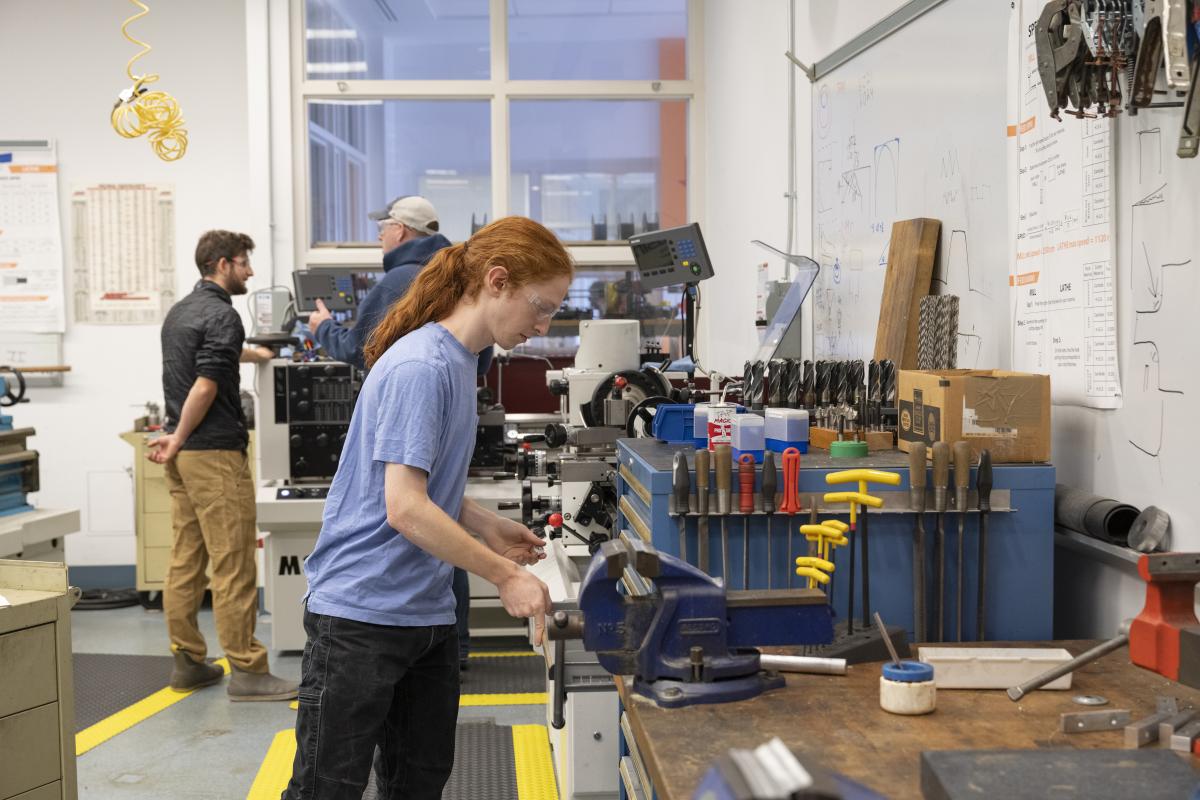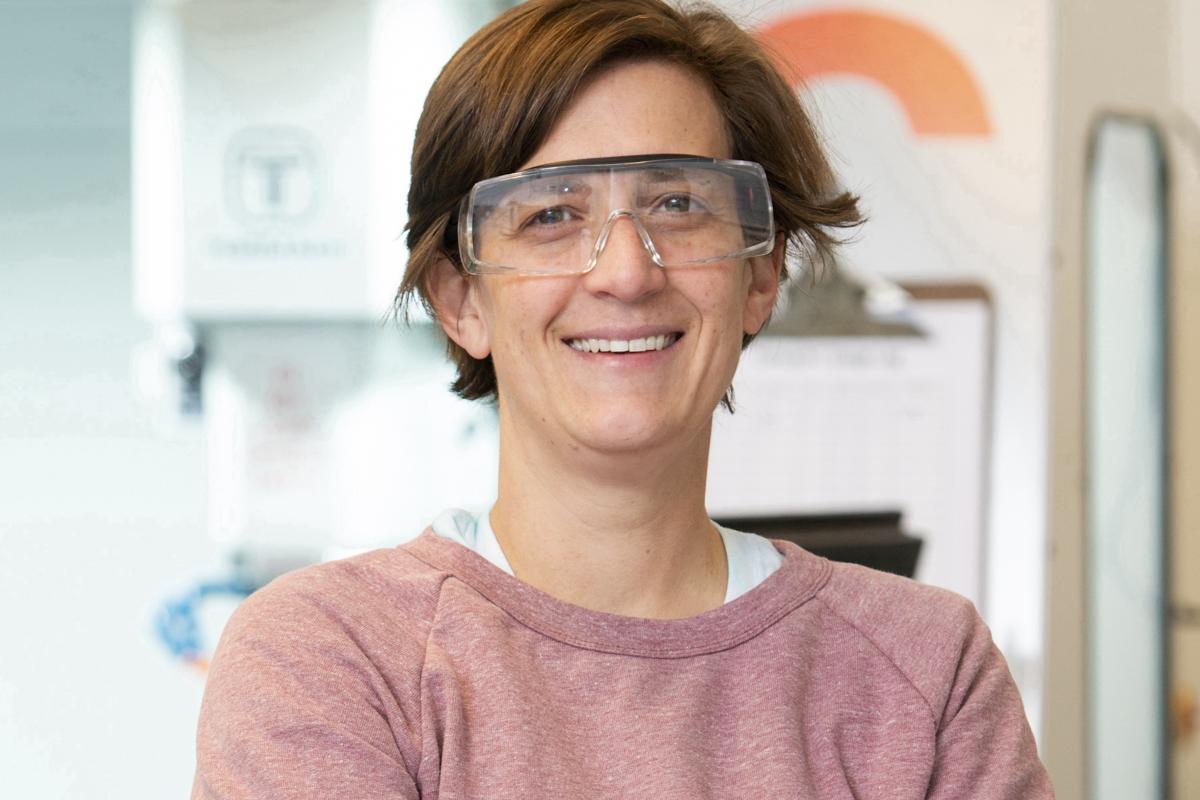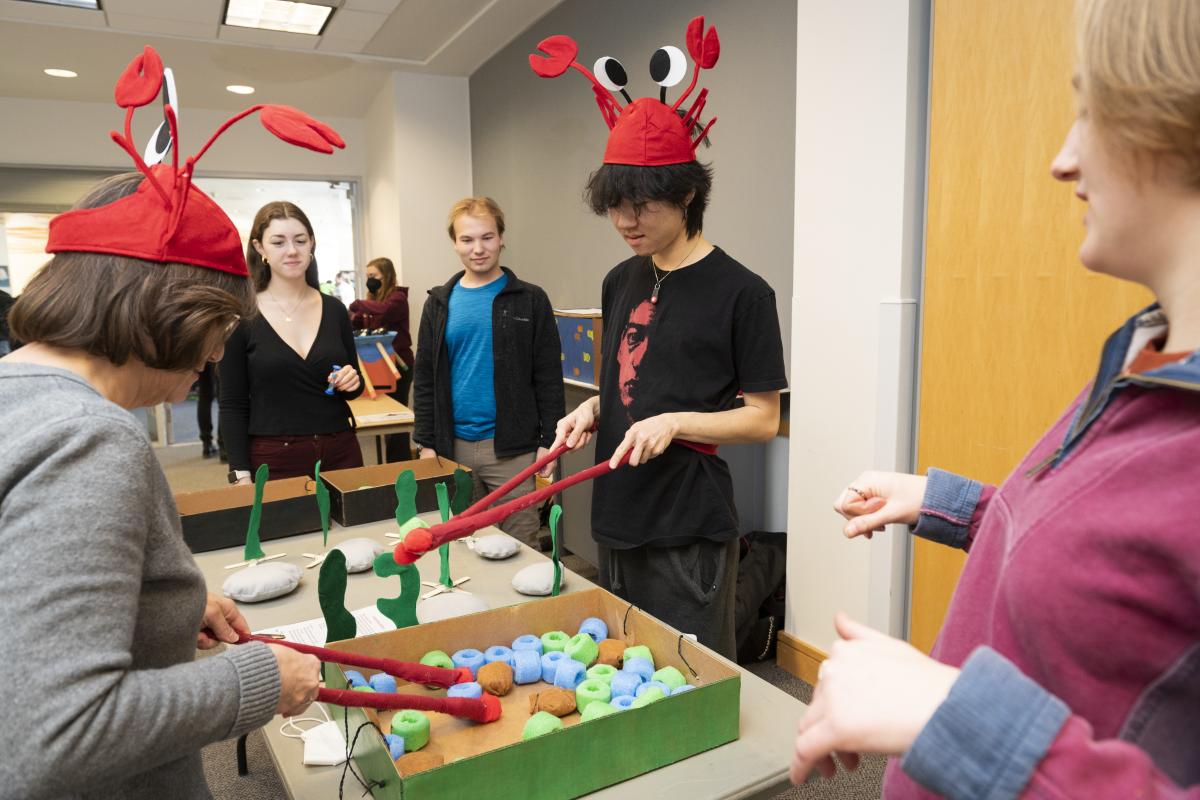Through curricular integration, Olin ensures that all students have the hands-on skills they need to thrive.
As an active learning environment focused on inclusivity, accessibility, and creativity, Olin’s Shop allows all community members to use and master the tools of fabrication and prototyping through hands-on training and guidance.
To deliver on this promise, the Shop is piloted by high-level objectives, including supporting fabrication across the learning continuum by being an integral part of the college curriculum. More than 50 percent of Olin courses—including technical and liberal arts classes—encourage or even require students to make use of the Shop’s equipment and resources.

Olin students working in the shop. Photo by Leise Jones (2022).
“Olin has always been at the forefront of project-based learning in a studio environment,” says Daniela Faas, associate professor of the practice and director of fabrication and laboratory operations.
“At many other schools, you can’t access their makerspaces or machine shops unless you’re in a particular course, but at Olin our approach is that the Shop is part of the community; it’s not just a sidekick space for just a few students, but a welcoming and vibrant space for all."

Olin has always been at the forefront of project-based learning in a studio environment...
At many other schools, you can’t access their makerspaces or machine shops unless you’re in a particular course, but at Olin our approach is that the Shop is part of the community; it’s not just a sidekick space for just a few students, but a welcoming and vibrant space for all."
Daniela Faas
Faculty
Within the first few weeks of arriving on campus, all approximately 100 first-year Olin students are trained to use some of the basic resources in the Shop, such as sanders, saws, drill presses, and woodworking tools. The required first-semester course “Design Nature,” utilizes the Shop to help every student find their confidence with mechanical design and prototyping from the very start. In this hands-on engineering class, students learn not only how to think like a designer, but also how to physically create models of their designs.
“From a pedagogical perspective, these students are coming to us from all different backgrounds,” says Deb Chachra, professor of engineering and one of the faculty members who teaches this foundational course. “Some have been doing FIRST Robotics for years and have always had access to shop facilities, and some have never picked up a saw in their lives.”
“Design Nature” begins by asking students to work individually to design and engineer a toy that captures the wonder of nature before moving onto a group design and fabrication project. For Chachra, this order of operations is no accident.

Design Nature exposition in Fall 2022. Photo by Leise Jones.
“When you put people into groups to work on a project, they tend to volunteer for tasks they already know how to do,” she says. “We always want to encourage students to choose tasks based on what they want to learn and not what they’re already good at. By ensuring that everyone has had some design and fabrication experience before moving into groups, we level the playing field and give students that confidence to take on the things that will help them grow.”
No matter what Olin students intend to do with their education and their future careers, Chachra thinks it’s important that they understand the relationship that all engineering has to the physical world.
“There’s a difference between doing things physically and virtually—there’s no undo button in the real world,” says Chachra. “We want students to gain this confidence in manifesting their ideas in a physical form, but we also want to cultivate an environment where everyone around them also knows that they possess that set of skills.”
“By ensuring that all students have open, educated access to the Shop throughout their educational journey and in their curricular or extracurricular endeavors, we encourage exploration and show them the positives of failure,” says Faas. “Teaching students how to utilize physical artifacts as a medium for communication and making connections helps them develop creative confidence and understand different methods by which they can bridge the gap between their ideas and reality.”